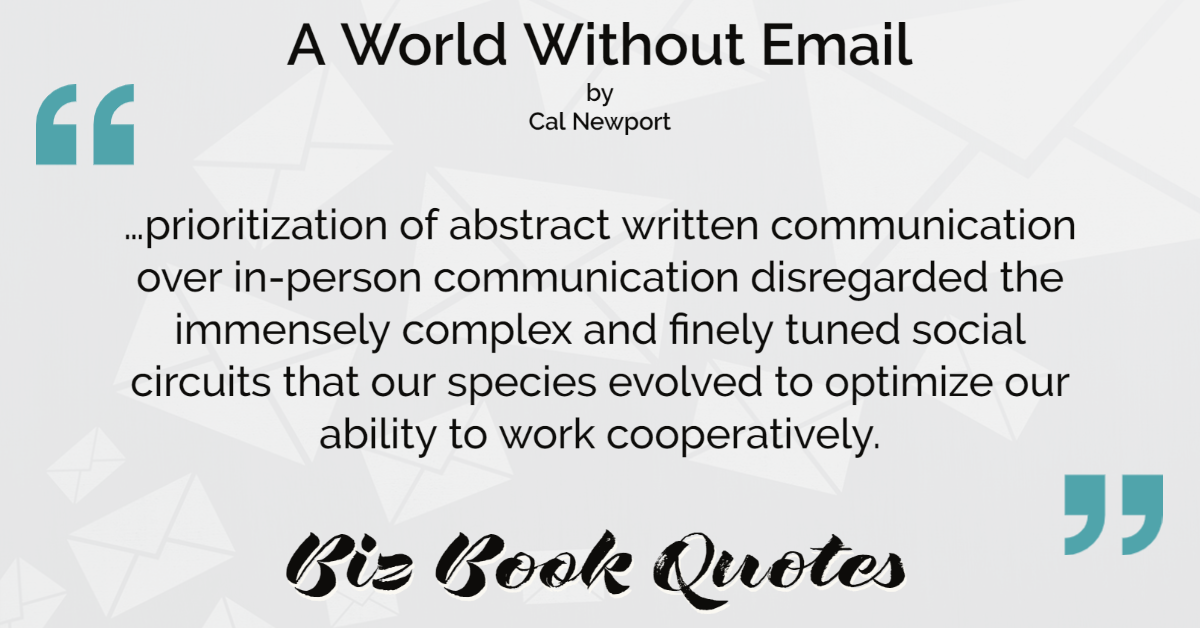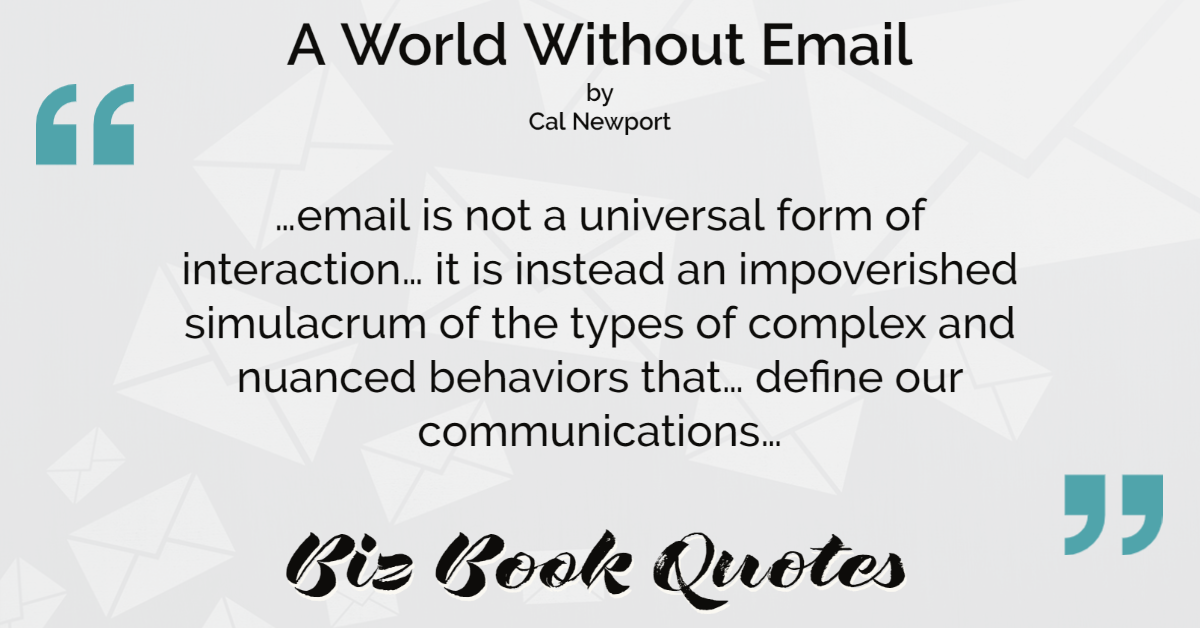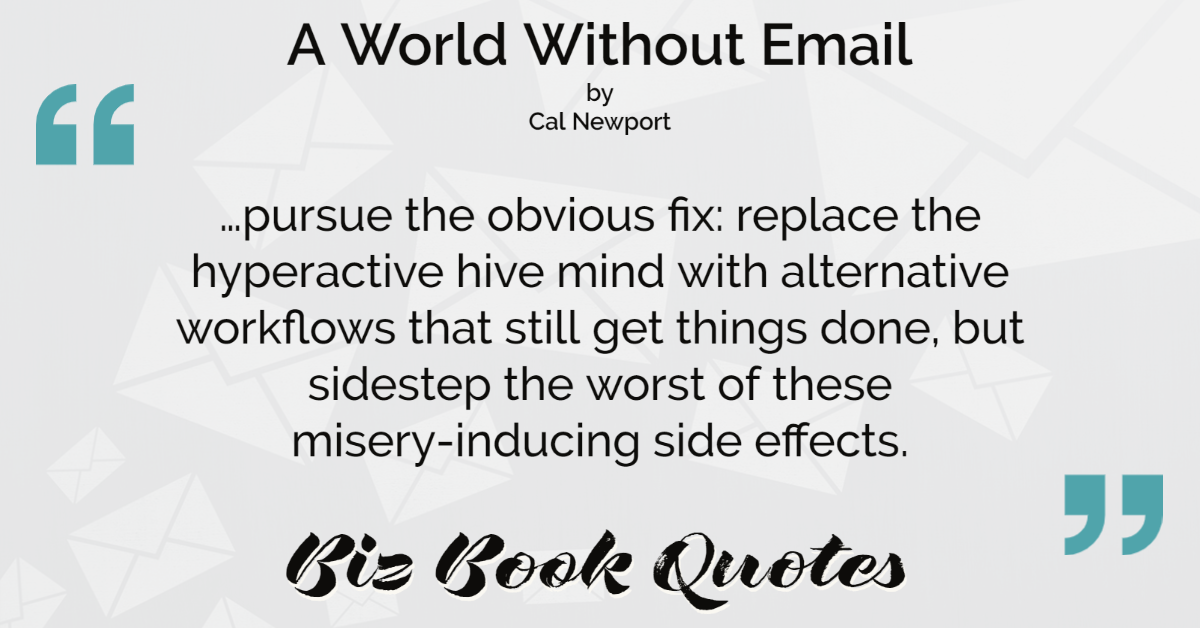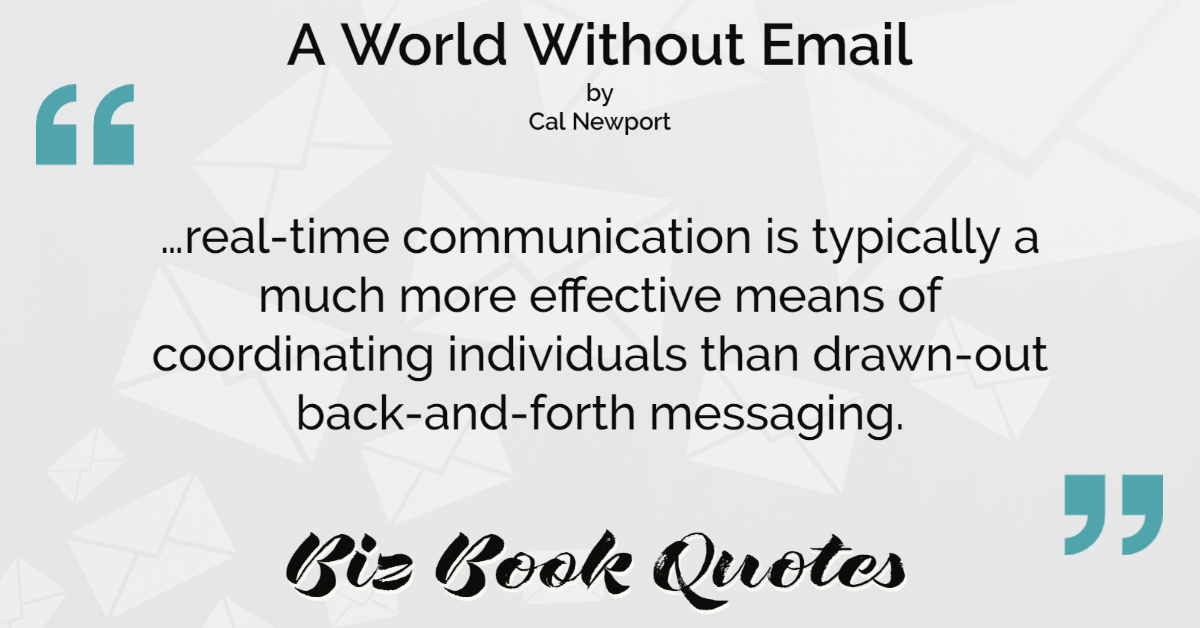 |
…prioritization of abstract written communication over in-person communication disregarded the immensely complex and finely tuned social circuits that our species evolved to optimize our ability to work cooperatively.
|
51 |
 |
The richer the sender’s subjective experience of what she’s trying to communicate, the bigger the gap grows between her understanding and that of her correspondent…
|
54 |
 |
When you… bypass all the rich, non-linguistic social tools… you shouldn’t be surprised that work messaging is making us miserable.
|
54 |
 |
…email is not a universal form of interaction… it is instead an impoverished simulacrum of the types of complex and nuanced behaviors that… defined our communications…
|
55 |
 |
When we made communication free, we accidentally triggered a massive increase in our relative workload.
|
60 |
 |
…pursue the obvious fix: replace the hyperactive hive mind with alternative workflows that still get things done, but sidestep the worst of these misery-inducing side effects.
|
61 |
 |
…asynchronous communication complicates attempts to coordinate, and therefore, it’s almost always worth the extra cost required to introduce more synchrony.
|
80 |
 |
…seek workflows that (1) minimize mid-task context switches and (2) minimize the sense of communication overload.
|
113 |
 |
A good production process… should minimize both ambiguity about what’s going on and the amount of unscheduled communication required to accomplish the work.
|
152 |
 |
…real-time communication is typically a much more effective means of coordinating individuals than drawn-out back-and-forth messaging.
|
161 |